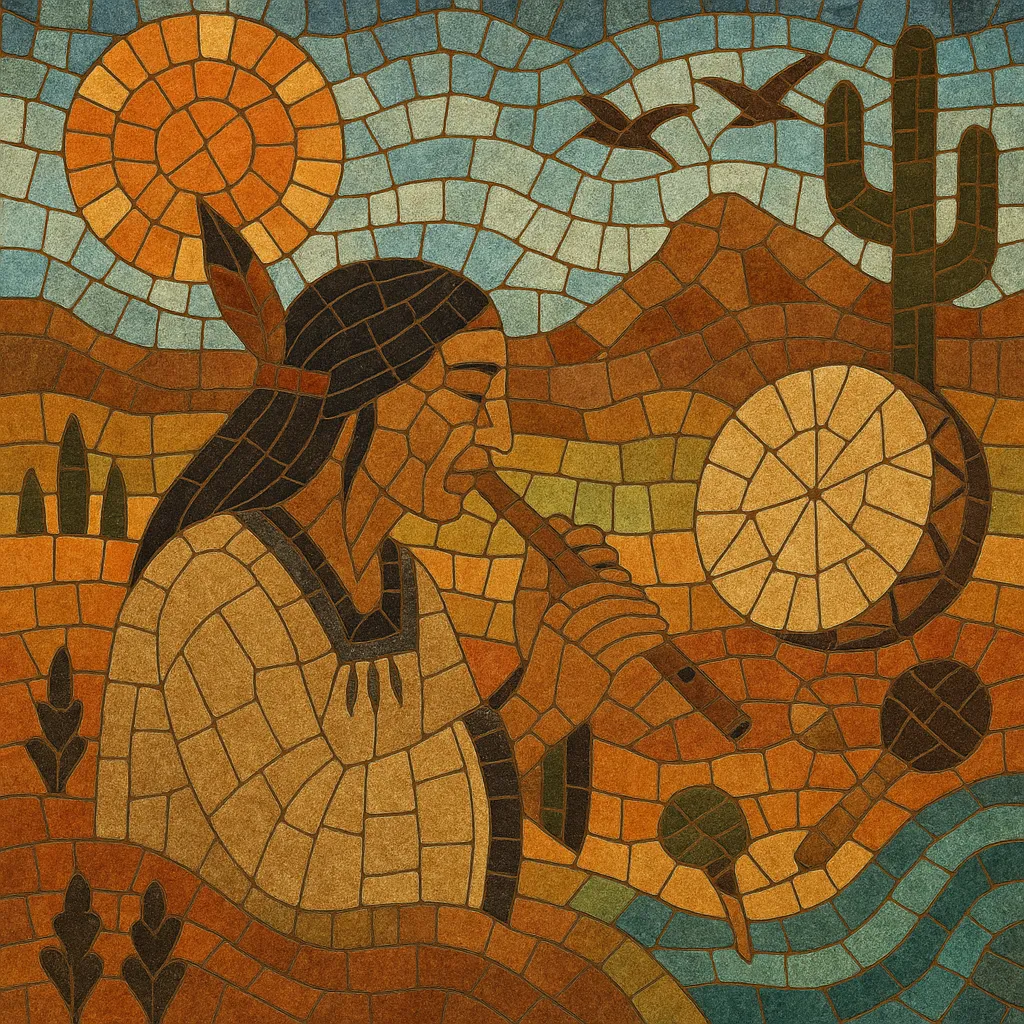
Native American new age blends traditional Indigenous North American musical elements with the spacious textures, meditative pacing, and production aesthetics of new age and ambient music.
Typical hallmarks include Native American flute melodies (often pentatonic), gentle frame-drum "heartbeat" rhythms, rattles and shakers, atmospheric drones, and abundant natural ambience (reverb, spacious delays, and field recordings of wind, water, and birds). The result aims for contemplation, healing, and cultural storytelling, while foregrounding the timbral beauty of Indigenous instruments in a serene, contemporary soundscape.
Albums frequently emphasize nature, spirituality, and place, inviting listeners into reflective states through minimal harmonic motion, open fifths, and slowly evolving textures.
The genre crystallized in the 1980s as the broader new age movement—driven by labels like Windham Hill, Narada, and Silver Wave—opened space for acoustic, meditative, and culturally rooted sounds. Native American flute virtuoso R. Carlos Nakai became a pivotal figure with early recordings (e.g., his 1983 releases on Canyon Records), demonstrating how traditional Indigenous instruments could speak fluently within new age and ambient aesthetics.
Through the 1990s, artists such as Coyote Oldman, Douglas Spotted Eagle, Robert Mirabal, and Joanne Shenandoah helped the music gain visibility on Billboard’s New Age charts and on specialty radio. Collaborations—most notably Nakai with pianist Peter Kater—solidified a refined studio sound that fused Indigenous melodic languages and ceremonial sensibilities with contemporary ambient production. Projects like Sacred Spirit (1994) brought the sound to mainstream audiences, though they also sparked conversations about sampling ethics and cultural appropriation, reinforcing the importance of Indigenous leadership and consent.
The establishment of the Grammy category for Best Native American Music Album (2001) highlighted a growing recognition for Indigenous recordings, many of which intersected with new age and ambient markets. Mary Youngblood’s Grammy wins further affirmed the genre’s prominence. Today, the style remains active through independent labels, wellness and mindfulness spaces, and film/TV placements, with ongoing emphasis on respectful cultural context, community engagement, and authentic representation by Native artists.

